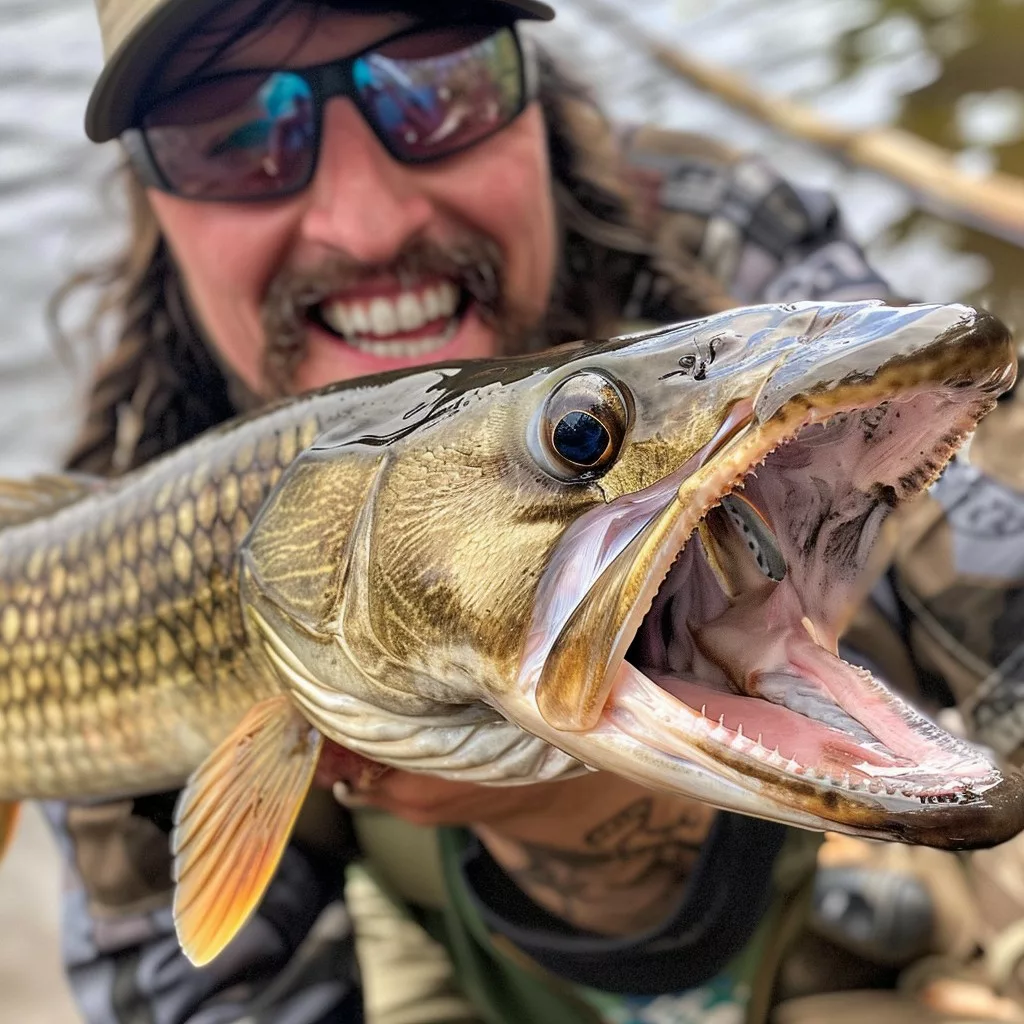Introduction to Muskellunge: The Freshwater Giant
Muskie, short for Muskellunge, reigns as one of the largest and most elusive freshwater fish, often sought after by anglers for its challenging catch. Beyond the thrill of the hunt, a common question arises: Can you eat Muskie? The short answer is Yes! But in this article we dive into understanding the culinary aspects of Muskie, debunking myths, and offering insights into how to safely and deliciously prepare this freshwater trophy.
Understanding Muskie: The Fish Itself
Muskie (Esox masquinongy), belonging to the pike family, is native to North America, predominantly found in the Great Lakes, Canada, and parts of the Mississippi River basin. Known for its elongated body, sharp teeth, and aggressive predation, Muskie is a top-tier predator in its ecosystem. However, its appeal doesn’t end at sport fishing; the culinary potential of Muskie is a topic of both intrigue and debate among anglers and chefs alike.
Can you Eat Muskie?: Debunking the Myths
We go into the details of if muskies are good to eat here.
- Taste and Texture: Contrary to some beliefs, Muskie offers a surprisingly mild flavor, more comparable to that of other popular freshwater fishes than its pungent pike relatives. Its flesh is firm yet tender when cooked correctly, making it a versatile ingredient in many recipes.
- Mercury Concerns: Like many large, long-lived predatory fish, Muskie can accumulate higher levels of mercury in its system. While occasional consumption is generally considered safe for most people, pregnant women, nursing mothers, and young children are advised to limit their intake.
- Preparation and Safety: The key to a delicious Muskie meal lies in its preparation. Proper handling, cleaning, and cooking are essential to reduce any potential health risks and to enhance its natural flavors.
Culinary Delights: Cooking with Muskie
Muskie can be cooked in various ways, each method bringing out a unique aspect of its flavor and texture. Here are some popular culinary techniques for preparing Muskie:
- Grilling: Season the fillets with herbs and spices and grill them to perfection. The smoky flavor complements the fish’s natural taste wonderfully.
- Baking: Baked Muskie with a crust of breadcrumbs and parmesan offers a crispy exterior and moist interior, making it a hit among fish enthusiasts.
- Frying: For those who prefer a classic approach, pan-fried Muskie fillets in butter with a squeeze of lemon provide a simple yet satisfying meal.
- Catch and Release Considerations: While Muskie is edible, it’s also worth mentioning the practice of catch and release, especially for trophy-sized specimens. This approach helps maintain healthy populations and ensures future anglers can enjoy the thrill of catching these magnificent fish.
Conclusion: Enjoying Muskie Beyond the Catch
Muskie, a revered game fish, also holds potential for culinary exploration. While it’s important to consider health advisories and sustainable fishing practices, Muskie can be a delightful addition to the dining table when prepared with care. Whether you’re an angler curious about tasting your catch or a culinary enthusiast eager to try new flavors, Muskie offers an exciting opportunity to expand your palate.
Visualizing the Muskie Culinary Experience
Let’s create an image that encapsulates the essence of enjoying Muskie, from catch to cuisine. Picture a serene lake at dusk, where an angler has just reeled in a majestic Muskie. The scene transitions to a cozy kitchen, where the fish is being prepared with care, highlighting the journey from lake to plate. This image should celebrate both the sport of fishing and the culinary delight of Muskie, showcasing the fish’s versatility and the angler’s respect for nature.

